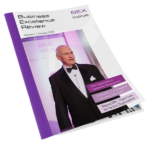Last Friday I saw an article on the website of a reputable British news agency asking if female leaders are disadvantaged by media bias. It pointed out that women such as Hillary Clinton (US presidential candidate) and Theresa May (UK Prime Minister) have their choice of clothing discussed in the media while their male counterparts seldom if ever do. Ironically, the article appeared in close proximity to one with the headline “Bikini-clad Swedish policewoman stops thief” and a photo of the officer doing so.
It would seem that even when discussing the media’s attention to female leaders’ attire, the media continues to focus on what women wear when they make headlines. This bias appears to be just as prevalent in the East as in the West – Japanese politician Koike Yuriko (who was elected Mayor of Tokyo last Sunday) is another example of a woman who has been criticized what she wears – in her case apparently “too much makeup”.
The article referenced work by researchers at Northwestern’s Kellogg Business School in Illinois which found that companies see a decline in their share price if they receive a lot of media attention has appointed a female Chief Executive. However, if a company gets a lot of attention having appointed a male Chief Executive, the share price gets a boost.

The current issue of the Harvard Business Review has an article about designing a “Bias-Free Organization”. It focuses on biases that influence diversity. These are biases that managers can act to reduce by – to go back to my previous blog – designing processes to eliminate them.
The article – which focuses mainly on gender bias – points out that corporate “diversity training” has been found to be ineffective in changing attitudes (no surprise really as bias tends to be in the domain of the subconscious and very difficult to overcome). It cites an experiment run by researchers at Yale into anti-bias training effectiveness that found the training had “almost no impact” and then promotes the use of process design to help overcome bias.
Before you decide that your organization doesn’t have bias, I should warn you of a bias known as “the bias blind spot” where we have a tendency to believe we are less biased than others, so you should do some checking to be sure.
A number of years ago, during an Excellence Assessment of a company in India, a BEX colleague and I were discussing diversity with the company’s top management. They were proud to highlight that they had a diverse workforce as they employed Muslims as well as Hindus in key roles and also had a female manager. In their minds they had diversity. My colleague, who is Indian, acknowledged this but also commented that there was no way for a person in a wheelchair to access the company’s headquarters so that they were not quite as embracing diversity as they might believe. It is all too easy to miss ways in which one can be biased, so it is worthwhile having somebody do a sanity check for you.
The pursuit of excellence requires the minimization of bias – it results in better decisions and better teams. The HBR article contains some good ideas on how to eliminate gender bias in some of your processes, so I would recommend giving it a glance.















